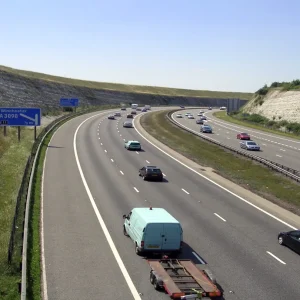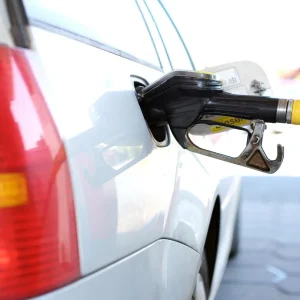
In recent years, the pressing issue of biodiversity loss and ecosystem collapse has become a focal point of global concern. This crisis, driven by human activities such as deforestation, pollution, and climate change, has profound implications across various sectors, including the van and light commercial vehicle (LCV) market in the UK. This article delves into how these environmental challenges are affecting the industry, exploring both direct and indirect impacts, and highlighting the strategic responses required to mitigate these effects.
Understanding Biodiversity Loss and Ecosystem Collapse
What is Biodiversity Loss?
Biodiversity refers to the variety of life on Earth, encompassing the different species, ecosystems, and genetic diversity within populations. Biodiversity loss occurs when these elements are diminished or destroyed, often due to human activities. This loss can lead to the collapse of ecosystems, which are crucial for maintaining environmental stability and providing essential services such as clean air, water, and fertile soil.
Causes and Consequences of Ecosystem Collapse
Ecosystem collapse can result from a combination of factors, including habitat destruction, pollution, overexploitation of resources, and climate change. When ecosystems collapse, the services they provide—like pollination, water purification, and carbon sequestration—are compromised, leading to broader environmental and economic repercussions.
Direct Impacts on the Van and LCV Market
Supply Chain Disruptions
Biodiversity loss and ecosystem collapse can significantly disrupt supply chains in the van and LCV market. For instance, the production of raw materials such as rubber and certain metals, which rely on stable ecosystems, may be affected. A decline in the availability of these materials can lead to increased costs and supply chain delays.
Rubber Production
Natural rubber, a critical component in tyre manufacturing, is primarily sourced from rubber trees grown in biodiverse tropical regions. Deforestation and climate change threaten these ecosystems, potentially leading to reduced rubber yields. This scarcity can result in higher prices for tyres and longer lead times, impacting vehicle manufacturing and maintenance schedules.
Metals and Minerals
Metals and minerals used in vehicle components, such as lithium for batteries and rare earth elements for electronics, are often mined in regions vulnerable to ecological degradation. Environmental damage in these areas can disrupt mining operations, leading to supply shortages and price volatility.
Increased Operational Costs
As ecosystems collapse, the environmental regulations and policies become stricter. Companies in the van and LCV market may face increased operational costs due to the need for compliance with new environmental standards. These costs can include investments in cleaner technologies, more sustainable supply chain practices, and enhanced waste management systems.
Changing Consumer Preferences
Environmental awareness among consumers is growing, influencing their purchasing decisions. Customers are increasingly favouring eco-friendly and sustainable products. This shift in consumer preferences is pushing manufacturers to innovate and produce more environmentally friendly vehicles. Failing to adapt to these changes can result in lost market share and revenue.
Indirect Impacts on the Van and LCV Market
Infrastructure Vulnerabilities
Biodiversity loss and ecosystem collapse can lead to extreme weather events, such as floods and storms, which damage infrastructure crucial for the van and LCV market. Roads, bridges, and warehouses are susceptible to such damage, leading to disruptions in logistics and increased maintenance costs.
Flooding and Road Damage
The increasing frequency and severity of floods can wash away roads and bridges, critical for the transportation of goods. Repairing these damages requires significant investment and time, during which logistics operations may be severely hampered.
Health and Safety Concerns
The collapse of ecosystems can also impact public health, leading to new diseases and exacerbating existing ones. This can affect the workforce within the van and LCV industry, leading to higher absenteeism and reduced productivity.
Vector-borne Diseases
Changes in ecosystems can alter the habitats of disease vectors like mosquitoes and ticks, potentially increasing the spread of diseases such as malaria and Lyme disease. This rise in health risks can affect the availability and health of workers in the industry.
Strategic Responses and Adaptation
Embracing Sustainability
To mitigate the impacts of biodiversity loss and ecosystem collapse, companies in the van and LCV market must adopt sustainable practices. This includes sourcing materials responsibly, reducing emissions, and investing in renewable energy.
Sustainable Sourcing
Companies should ensure that the raw materials they use are sourced sustainably, supporting initiatives that protect ecosystems and promote biodiversity. This can involve partnering with suppliers who adhere to environmental standards and certifications.
Emissions Reduction
Reducing greenhouse gas emissions is crucial for combating climate change, a significant driver of biodiversity loss. Investing in electric and hybrid vehicles, as well as improving fuel efficiency, can help the industry reduce its carbon footprint.
Innovation in Vehicle Technology
The development of new technologies can help the van and LCV market adapt to environmental challenges. This includes advancements in electric vehicles (EVs), alternative fuels, and energy-efficient designs.
Electric Vehicles
The shift towards electric vehicles (EVs) is a critical strategy for reducing the environmental impact of the van and LCV market. EVs produce zero emissions and can help mitigate the effects of climate change, benefiting both the environment and public health.
Alternative Fuels
Exploring alternative fuels, such as hydrogen and biofuels, can provide cleaner energy sources for vehicles. These fuels can reduce dependence on fossil fuels and lower the overall environmental footprint of the industry.
Enhancing Resilience
Building resilience against environmental disruptions is essential for the van and LCV market. This involves investing in robust infrastructure, improving supply chain flexibility, and developing contingency plans for extreme weather events.
Infrastructure Investment
Upgrading and maintaining infrastructure to withstand extreme weather events can help minimise disruptions. This includes designing roads and bridges that are more resistant to flooding and other climate impacts.
Supply Chain Flexibility
Developing flexible supply chains that can adapt to environmental changes is crucial. This can involve diversifying suppliers, utilising local sources where possible, and maintaining buffer stocks of critical materials.
Collaboration and Policy Engagement
Collaboration with stakeholders and active engagement in policy-making can drive collective efforts to address biodiversity loss and ecosystem collapse. The van and LCV market can play a significant role in advocating for and implementing policies that support environmental sustainability.
Industry Collaboration
Collaboration within the industry can lead to the sharing of best practices and joint initiatives to tackle environmental challenges. Industry associations can facilitate this cooperation and drive collective action towards sustainability goals.
Policy Advocacy
Engaging with policymakers to promote regulations that protect biodiversity and support sustainable practices can help create a favourable operating environment. The van and LCV market can contribute to shaping policies that balance economic growth with environmental protection.
Case Studies and Examples
Leading by Example: The Electric Van Transition
Several companies in the UK are already leading the way in adopting electric vans. For instance, major logistics firms have begun transitioning their fleets to electric vehicles to reduce emissions and comply with environmental regulations. This shift not only demonstrates corporate responsibility but also sets a benchmark for the industry.
Sustainable Supply Chains: The Rubber Industry
Efforts to create sustainable supply chains in the rubber industry highlight the importance of protecting ecosystems. Companies are partnering with conservation organisations to ensure that rubber is sourced from plantations that adhere to environmental and social standards. This approach helps maintain biodiversity while securing a stable supply of raw materials.
Conclusion
Biodiversity loss and ecosystem collapse present significant challenges to the van and LCV market in the UK. From supply chain disruptions and increased operational costs to infrastructure vulnerabilities and changing consumer preferences, the impacts are far-reaching. However, by embracing sustainability, innovating vehicle technologies, enhancing resilience, and engaging in policy advocacy, the industry can navigate these challenges and contribute to a more sustainable future. Proactive strategies and collaboration will be key to ensuring that the van and LCV market remains resilient in the face of environmental challenges, supporting both economic growth and ecological preservation.





